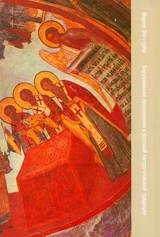
Cheruvimskie pesnopenija v russkoj liturgiceskoj tradicii

| Författare | |
|---|---|
| Förlag | Acta Universitatis Stockholmiensis |
| Format | Häftad |
| Språk | Svenska |
| Antal sidor | 184 |
| Vikt | 0 |
| Utgiven | 2004-01-01 |
| ISBN | 9789172658851 |
This thesis is a contribution to a growing field of studies on the reception of Byzantine culture in Russia. The object of investigation is the history of the Church Slavonic translation of the Cherubika, which constitute one of the most ancient and dogmatically important functional genres of Byzantine liturgical hymns. The chronological frame of this study is the 13th–17th century. Particular attention is focused on the last change in the liturgical texts in Muscovite Russia, in the mid-17th century. This liturgical reform, which led to the famous Schism in the Russian Church, is studied as part of the cultural reforms started by Tsar Alexis Romanov (1645–1676).
The most characteristic feature of the Orthodoxy is the principal unity of Scripture and Tradition, which in a hermeneutical perspective means the inseparability of the text and context. The semiotic and interdisciplinary approach used in this study reflects this principle. The Slavic Cherubika are interpreted in a broad cultural perspective, and Church Slavonic translations are studied in the proper theological, rhetorical and linguistic contexts.
Although the 17th-century translations made in Moscow were based on late Greek and South Slavic sources, they reconstruct the original dogmatic message of the Byzantine Cherubika and are hence closer to the Tradition than earlier Slavonic translations.
This study offers a new interpretation of the nature of the Schism. It is shown that the main cause of the controversy between Reformists and Old Believers lies in their different understandings of the connection between Text and Ritual. The traditional medieval interpretation of the Cherubika is influenced by ceratin iconographical themes, other liturgical texts and priest´s actions during liturgy. The transition from a liturgocentric interpretation of sacral texts to a descriptive theological interpretation was a break from the characteristic Russian form of liturgocentrism and the beginning of a new cultural era.

























